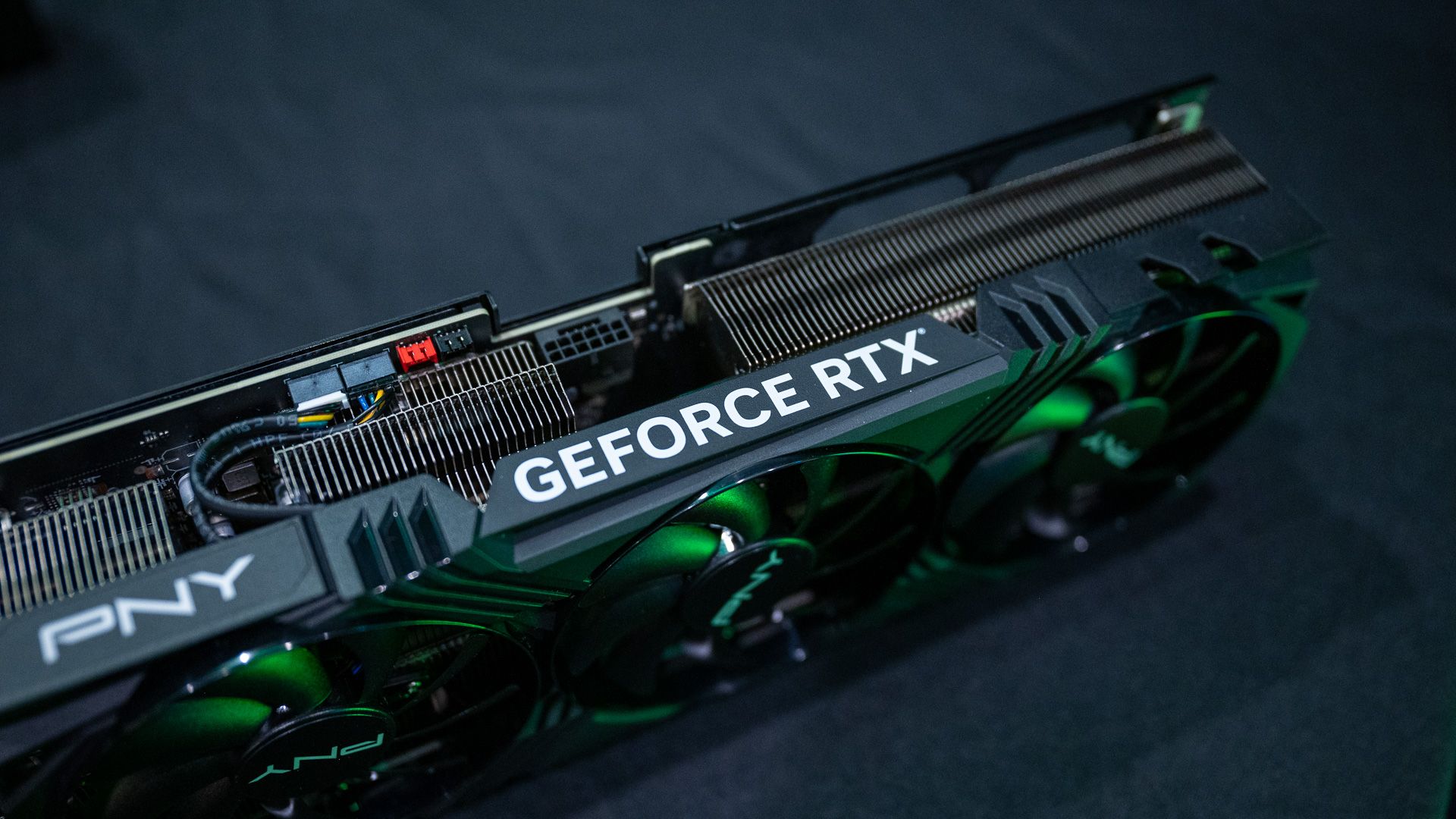
Unveiling the True Impact of Ray Tracing: More Revolutionary Than Expected

Unveiling the True Impact of Ray Tracing: More Revolutionary Than Expected
Key Takeaways
- Ray tracing means much more than just better image quality - it includes reflections, shadows, ambient occlusion, and global illumination techniques.
- Existing hardware has struggled with the resource-intensive operation of ray tracing, but things have improved significantly since NVIDIA’s first push to take ray tracing mainstream.
- Upscaling technologies like DLSS, FSR, and XeSS are key to balancing image quality and performance in ray-traced games.
Are you unimpressed with how ray tracing is being implemented on current-generation consoles? Are you questioning what all of the fuss is about? Let’s take a step back and reassess what ray tracing means for games.
Ray Tracing Isn’t Just a Toggle
All too often the term “ray tracing” is used as a be-all-end-all term that is somehow translated into “superior image quality,” but there’s a lot more to it than that. Ray tracing is a real-time rendering technique , but one that encompasses a multitude of elements that affect final image quality.
The most obvious examples that spring to mind are reflections and shadows. Ray-traced reflections offer a true like-for-like mirror of whatever is in the scene, albeit with varying degrees of fidelity owing to available processing power. Ray-traced shadows work in the same way, generating accurate real-time shadows based on the position of light sources within the scene.
There are also techniques with slightly more complex-sounding names, that make a huge difference. Ray-traced ambient occlusion calculates how ambient lightning affects different objects in a scene, applying shadows to geometry in a natural way. Think about the way you might find shadows in the corner of a room, or on the underside of a rock.
Ray-traced global illumination works in tandem with this technique to generate realistic and real-time whole-scene lightning. This encompasses the way the sun’s rays scatter within a scene. Bounced light is just as important here, softening darker parts of the scene and even reflecting the hue of nearby objects (like green grass reflecting on the underside of a rock).
Ray tracing is an umbrella term for a whole variety of techniques that effectively simulate the way light fills a scene, eliminating the need to “fake” lighting and removing the telltale signs of traditional “rasterized” lighting. These techniques can be turned on and off as necessary. If you’re a PC gamer, you’re often left to your own devices, while console gamers are constrained by the capabilities of their platform of choice.
Side-by-side, the difference between rasterization and ray tracing is fairly evident, but one thing that has become abundantly clear over the past few years is that game developers are very good at faking many of the techniques that ray tracing hopes to achieve in real-time.
This includes “baked” lightning that realistically illuminates static scenes, the clever arrangement of dynamic lighting to create atmosphere, and the use of screen space reflections that have obvious tell-tale signs but only if you know what you’re looking for.
The Hardware Is Only Just Getting There
The problem with ray tracing is that simulating light is a resource-intensive operation. You’ll probably have to make some sacrifices if you want to experience ray tracing. This could be a lower render resolution, through the use of upscaling techniques like NVIDIA’s DLSS, or by disabling or reducing the fidelity of many of these effects .
Real-time ray tracing first hit the mainstream when NVIDIA rebranded its “GTX” line of graphics cards to “RTX” cards in 2018. The RTX moniker has since become shorthand for ray tracing, with the term “RTX On” used in everything from game development to game mods and online memes. But this first generation of 20 series NVIDIA graphics cards was not particularly capable in terms of ray tracing.
Even the 30 series that followed struggled, with all but the highest tier of cards requiring some serious compromises in RTX applications (see, even I’m doing it now). The 40 series of cards are finally approaching a level of performance that has convinced many gamers to flip the RTX switch, largely thanks to bundled machine learning capabilities.

Justin Duino / How-To Geek
But Microsoft and Sony also shoulder the blame for hyping up a technology that wasn’t ready for the big time. During the launch of the Xbox Series X and PlayStation 5, both manufacturers featured the term in their marketing materials and promotional videos. It could be argued that the current-generation consoles’ inability to integrate meaningful ray tracing features is to blame for many becoming jaded with the term.
Fortunately, the situation on PC is much better, with many games including ray-traced rendering that (finally) ticks along at very playable frame rates.
Upscaling Technologies Bring Ray Tracing to Wider Audiences
Though ray tracing performance has steadily improved since the introduction of NVIDIA’s 20 series cards, one area that’s come on leaps and bounds is upscaling. This is one way to claw back image quality when making sacrifices to experience ray-traced techniques.
Every GPU has a hardware “budget” which is spent on the various aspects that make up visual fidelity. This includes render resolution, rendering techniques (including ray tracing), level of detail within a scene, post-processing effects, and so on. One of the best ways to improve performance and get playable frame rates is to reduce the rendered resolution, which allows you to maintain a good level of detail and leave some of the more “expensive” rendering techniques on.
A lower render resolution means that the GPU produces far fewer pixels, resulting in a softer image that might not be suitable for today’s high-resolution 1440p and 4K displays. This is exactly where upscaling techniques come in. Using dedicated machine learning hardware, modern GPUs can polish this image and allow for something that resembles the best of both worlds.
There are a wide variety of technologies that now exist to do just this, from NVIDIA’s DLSS (Deep Learning Super Sampling) to AMD’s FSR (FidelityFX Super Resolution) and Intel’s XeSS (Xe Super Sampling). Sony is expected to be working on its own hardware-accelerated super sampling solution (dubbed PSSR) in the heavily rumored PlayStation 5 Pro .
NVIDIA is leaps and bounds ahead in this department, with DLSS outshining technologies from AMD and Intel. The company even has a ray tracing-specific upscaling technology called DLSS Ray Reconstruction, which acts both as a denoiser (a vital part of the ray tracing pipeline) and an upscaler. This means better quality visuals within ray-traced applications when relying on upscaling to improve performance.
It’s very likely that future hardware including graphics cards from NVIDIA, AMD, and Intel will lean heavily on upscaling. It would be surprising to see Nintendo’s Switch successor not feature some sort of upscaling solution, particularly given NVIDIA’s involvement in the original hybrid handheld. Expect the next generation of Xbox and PlayStation consoles to incorporate this too.
Upscaling techniques aren’t perfect, but they’re probably the best compromise you can make between fidelity and performance and the technology is only going to improve (particularly as AMD and Intel catch up to NVIDIA).
How Might Ray Tracing Impact Game Design?
It’s hard to say how ray tracing will affect game development, and there are plenty of competing opinions on the matter. It’s possible that by removing the need to “fake” certain techniques and instead relying on a simulation of how lighting works in the real world, game developers will be able to lean on these techniques to help them design levels and worlds.
This will depend on a future where ray-traced graphics are no longer prohibitively expensive in terms of hardware budgets. Since developers already need a deep understanding of the tools available to them, it would be misleading to say that this will somehow “simplify” game design. This is particularly true considering the visual element is just one aspect of game design.
For now, sit back and enjoy the pretty light show as ray tracing is on the cusp of going mainstream (again). The next generation of graphics cards and home consoles will hopefully make good on the promises made in years gone by.
Also read:
- [New] 2024 Approved Bring Out the Splendor in Your iPhone Reflections
- [New] Unveiling 30 New Dimensions in Metaverse Memes
- 2024 Ultimate Guide to the Best Linux Laptops: In-Depth Analysis and Ratings From Professionals
- Aquarius 2018: Your Personal Horoscope | Free Book
- Asus' Discreet Marvel: A Design That Hides Stellar Creative Capabilities Revealed
- Discover the Best 16 Destinations for Finding Top-Trending, Viral Meme Content Online
- Experts' Guide to Saving on Microsoft's Latest Surface Pro 11 - Top Affordable Picks Revealed
- Get the Adonit Nest for Only $65! Top-Rated USB Hub Upgrade for Remote Workers Spotted
- How to Stop Life360 from Tracking You On Apple iPhone 11? | Dr.fone
- In 2024, How to Transfer Data from Motorola Razr 40 to BlackBerry | Dr.fone
- In 2024, Tint Tuning Toolkit
- Shaking Up the Status Quo Unique Naming Tips for Filmmakers for 2024
- The Surprisingly Stellar Performance of the Unassuming Asus Workstation for Creatives | Tech Insights by ZDNet
- Top Pick: Must-Have Accessories Enhancing Your PC's Capability with 8K Monitors Support – Spotted
- Unmatched Clarity Awaits with Our Lightweight Laptop's Exceptional Screen, Now Discounted !
- Unveiling Google's Latest Innovation: The Chromebook+ with Amazing Generative AI Capabilities – My Impressions From a Comprehensive Test
- Windows 11 Update: Impact on Linux Subsystem
- Title: Unveiling the True Impact of Ray Tracing: More Revolutionary Than Expected
- Author: George
- Created at : 2024-12-20 20:29:50
- Updated at : 2024-12-27 22:42:34
- Link: https://hardware-tips.techidaily.com/unveiling-the-true-impact-of-ray-tracing-more-revolutionary-than-expected/
- License: This work is licensed under CC BY-NC-SA 4.0.